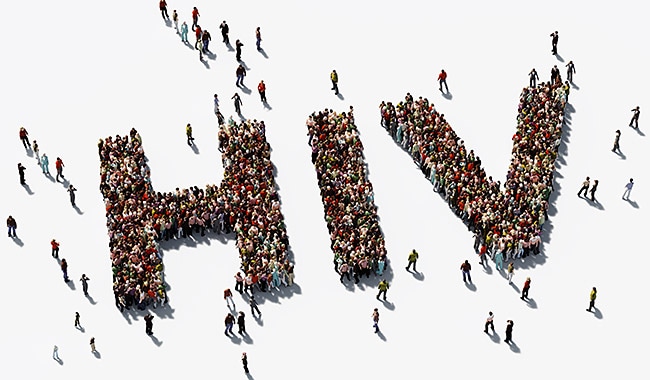Brian I.’s Story

Brian was in good health, working and managing his infection with HIV—the virus that can cause AIDS—when smoking led to health problems that nearly killed him. Smoking is especially dangerous for people who are living with HIV. For Brian, smoking and having HIV led to clogged blood vessels. At age 43, he had a blood clot in his lungs, a stroke, and surgery on an artery in his neck.
Brian had already beat tough health problems—including being very sick with AIDS—but he had not quit smoking. “It took a stroke for me to actually stop smoking,” said Brian. For months after the stroke, Brian had trouble speaking and reading. He couldn’t work or even dress himself. Today, his right hand is still weak, so he can no longer work as a waiter or teach pottery classes. Brian hopes his story will inspire other people to quit smoking before it’s too late. “Smoking is something that you do have control over. You can stop. And it’s worth your life to stop smoking.”
Persons with disabilities experiencing problems accessing these videos should contact CDC-INFO at CDC-INFO email form: https://www.cdc.gov/info, 800-232-4636 or the TTY number at (888) 232-6348 and ask for a 508 Accommodation PR#9342. If emailing please type “508 Accommodation PR#9342” without quotes in the subject line of the email. Please include the URL of the site in the Subject line of your email request that you would like to access.
View more Tips videos sorted by name, disease and specific groups
Brian I.’s Biography
On New Year’s Day in 2013, Brian started the year with a burst of creativity at a California pottery studio where he was a master teacher. He took a cigarette break outside and when he came back, his right hand wouldn’t work. He couldn’t hold a pen, a glass, or a piece of clay. He struggled to speak. At just 43 years old, Brian was having a stroke. His brain was not getting enough blood and oxygen, and he was rushed to the hospital by ambulance. He quit smoking that day.

Brian had already beat tough health problems—including being very sick with AIDS (acquired immune deficiency syndrome)—but he had not quit smoking. Cigarettes are especially dangerous for people who are living with HIV, the virus that can cause AIDS. For Brian, smoking and having HIV led to clogged blood vessels. Inside his arteries, a sticky plaque was building up. At first, Brian had no symptoms. Then a few months before his stroke, Brian had a blood clot in his lungs. Doctors treated Brian and urged him to quit smoking.
“I wanted to quit from the beginning, but it was an addiction and I couldn’t stop,” he said. “It took a stroke for me to actually stop smoking.”
Like many people who smoke, Brian was a teenager when he picked up his first cigarette. Smoking seemed daring to him—a symbol of freedom and independence. When Brian was 20, he started living openly as a gay man and discovered that smoking was common in LGBTQ+ communities, even on the dance floor at clubs. By then, Brian smoked a pack a day, and cigarettes had nothing to do with freedom. His addiction to cigarettes now controlled him, and he wanted to stop smoking. Through the years, he tried to quit many times.
On the day of his stroke, Brian was quickly taken to the hospital and had surgery to clean out a clogged artery in his neck. Regaining use of his body and mind has been a long process that’s still not done. At first, he couldn’t dress himself, brush his teeth, or cook. Speaking and reading were difficult.
Today, Brian can manage buttons and shoelaces, as long as he goes slowly. But his right hand is still weak and numb, so he can no longer work as a waiter. After many years as an expert potter, his artistry now looks more like the work of a beginner. Brian’s HIV is under control, as it has been for a long time, but he’s not sure when or if he’ll fully recover from his stroke.
Brian hopes his story will inspire other people to quit smoking before it’s too late. “Having HIV is a part of your life forever,” he says. “Smoking is something that you do have control over. You can stop. And it’s worth your life to stop smoking.”


